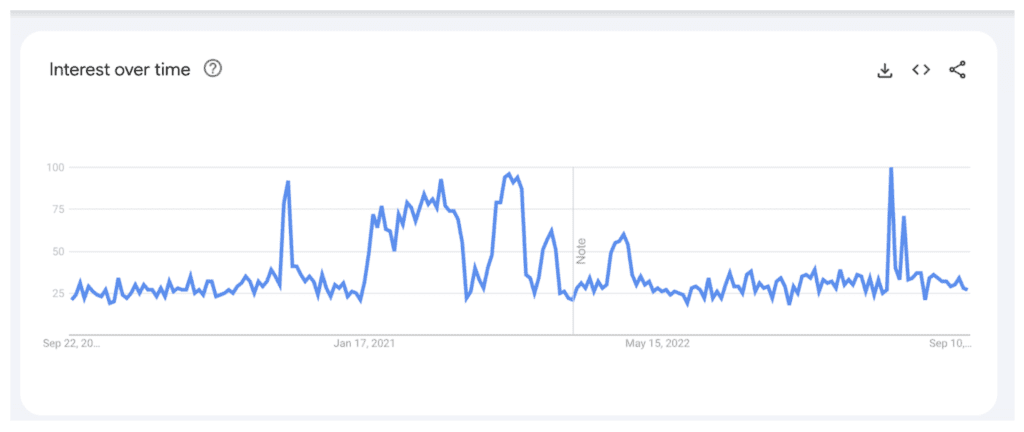Nov 29, 2023
11 Healthy Home Statistics To Use on Your Website
If you aren't already using stats in your online messaging, this list is a great reference and starting point to make changes in your content marketing strategy.
By: Cory Allyn
Even though the COVID-19 pandemic resulted in big increases for search volume around indoor air quality and IAQ solutions like air purifiers, interest has since tapered off.

That means that it’s up to contractors to make the case to homeowners that:
- Indoor air quality in their homes is important.
- Any health problems they may be experiencing—asthma, allergies, headaches—could be caused by problems with their home.
- Home upgrades are linked to improvement in occupant health.
But do homeowners simply have to trust your word? No! The scientific research in this field is still clearly in its early stages, but there is more and more research being published on the health risks of poor indoor air quality and what effect upgrades like insulation, air sealing, mechanical ventilation and air purification, and other services can have on occupants.
On a recent Energy Circle webinar, Environmental Health Scientist Kevin Kennedy stopped by to discuss a new study he co-authored on the health effects of home weatherization upgrades on children with asthma. Following that webinar, we wanted to share a few of the more compelling healthy home studies and statistics we’ve seen. Keep reading to see what we found and how you can use this information to improve your marketing efforts.
1. Acute Care Visits in Homes with Children with Asthma Dropped by 34% After the Home was Weatherized
Source: “The Impact of a Weatherization Program on the Health Outcomes for Children with Asthma“, A Preliminary Study Commissioned by the City of Kansas City, Missouri, and Metropolitan Energy Center
2. Households that had weatherization work performed on their homes “reported saving just over $500 in out-of-pocket medical expenses post-weatherization and an additional $2,800 in additional health benefits.”
Link to Study: “Health and Household-Related Benefits Attributable to the Weatherization Assistance Program“, published by Oak Ridge National Laboratory
3. “Weathering 2,000 low-income homes in Vermont would help prevent an estimated 223 emergency department visits, 13 hospitalizations, and 0.5 deaths over a 10-year period, associated with reduced health impacts caused by asthmas, cold and heat.”
Source: “Weatherization & Health in Vermont“, published by the Vermont Department of Health
4. During an indoor air quality study conducted in Utah, wildfire smoke from California increased indoor air pollution PM2.5 levels by 5 to 6 times their normal levels, “about 78% of outdoor pollution levels.“
Link to study: “Long-term analysis of the relationships between indoor and outdoor fine particulate pollution: A case study using research grade sensors“, The University of Utah
5. “Americans, on average, spend approximately 90 percent of their time indoors, where the concentrations of some pollutants are often 2 to 5 times higher than typical outdoor concentrations.”
Source: Environmental Protection Agency
6. “30 percent of all U.S. households expressed concerns about some aspect of their home negatively impacting or posing a risk to their health.”
Link to study: “Healthy Home Remodeling: Consumer Trends and Contractor Preparedness“, published by the Joint Center for Housing Studies of Harvard University
7. “40 percent of US homes have at least one health or safety hazard.”
Source: 2022 United States Healthy Housing Fact Sheet, National Center for Healthy Housing
8. A study of indoor air quality before and during the COVID-19 pandemic showed “PM2.5 levels in households while working from home were significantly higher than in offices while working at the office.”
Link to study: “Indoor Air Quality and Health Outcomes in Employees Working from Home during the COVID-19 Pandemic: A Pilot Study“
9. Testing of different combinations of mechanical ventilation and air filtration systems in a test house “found that all systems reduced indoor particle levels that originated from outdoor air, and that four systems reduced the level of indoor PM by more than 90 percent.“
Link to study: “Reducing In-home Exposure to Air Pollution,” Prepared for the California Air Resources Board and The California Environmental Protection Agency
Source: “The persistence of smoke VOCs indoors: Partitioning, surface cleaning, and air cleaning in a smoke-contaminated house“, a study published in Science Advances
11. An online survey of more than 1,000 Americans revealed that 29% of them “never change their air filter in their home.”
Source: The Zebra
“How Do These Statistics Help Contractors Like Me?”
We didn’t create this list just to educate contractors! Even if you aren’t already familiar with some of these specific facts or statistics, you are likely aware of the general takeaways. But if you aren’t already using stats like this in your online messaging, this list is a great reference and starting point to make changes in your content marketing strategy.
Referencing (as well as linking back to the original websites or studies) scientific research and statistics from trusted sources in blog articles and the different services pages of your own website has a few benefits:
1. It conveys your expertise and building science/healthy home knowledge.
2. It allows you to make a convincing argument to homeowners that your services have been studied and connected to health benefits.
3. Linking to high-quality sources has SEO (search engine optimization) value; it can impress Google and result in increased visibility for your website and your company online.
This article was originally published in the Energy Circle Blog and is republished with permission.





